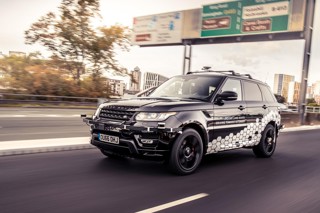Increasing sophistication of car and van technology offers a range of benefits, but there are still challenges which need to be overcome.

Data ownership
Connected vehicle technology will create an enormous amount of data, ranging from which seatbelts are being worn right through to complicated diagnostic information.
But who owns this information? Is it the manufacturer whose product creates the data, or should it belong to the vehicle owner or operator?
This is an ongoing debate as manufacturers want to retain ownership of the data as they pay to collect and process it, which would allow them to monetise the information by selling it to third parties such as fleets and leasing companies.
But the BVRLA believes vehicle owners should control it and has launched its own data principle guidelines to help members when negotiating with manufacturers over data use and control.
The issue of information ownership and protection has led to a number of leasing companies refusing to sign the terms and conditions for the latest connected services (Fleet News, June 9, 2016).
However, Lee Colman, head of connected car at automotive technology consultancy SBD Automotive, warns that not utilising connected services will lead to a lose-lose scenario where manufacturers, owners and drivers all miss out on the advantages connected services offer.
He says often when data sharing consent is removed, all the connected services in that vehicle will fail to work and that can include traffic data, sat-nav updates and service notifications.
Data network coverage
The data created by connected cars each hour is expected to reach around 25GB: the equivalent of a dozen high-definition movies.
This demand on the data network presents challenges for the connected car industry, particularly in a country where mobile phone signal and Wi-Fi strength are sometimes patchy.
“The (25GB) is definitely not something that is happening today – definitely not in the automotive industry,” says Niranjan Thiyagarajan, senior consultant automotive and transportation at Frost & Sullivan.
“This is probably a ‘2025’ scenario when cars will transmit V2V (vehicle to vehicle), V2I (vehicle to infrastructure) and V2X (vehicle to everything) data.
“A lot of work has to happen before our infrastructure can support a 25GB future.
“Today’s vehicles are limited to mobile network (2G, 3G and 4G) as well as Wi-Fi connectivity. In future you can see this moving to 5G networks and satellite communication, both of which have very dedicated bandwidth and communication channels.”
Security
A survey carried out last year by software security specialist Veracode found that 50% of UK drivers were ‘very concerned’ or ‘extremely concerned’ that connected vehicles could be hacked or fail to operate as intended.
This follows an incident in 2015 when, during a demonstration in the US, a Jeep Cherokee was completely taken over by a third party while driving at almost 70mph.
SBD Automotive has identified more than 50 potential attack points in the connected car eco-system, including smartphone apps, steering and braking ECUs, airbag ECUs and tyre pressure monitoring systems.
However, Niranjan Thiyagarajan of Frost & Sullivan, doesn’t think the security of connected cars will be a “major concern”.
“The excitement and interest prompted by the Jeep incident overlooks the fact that connected car security is just a small piece of the value chain,” he says.
“The entire industry needs to invest a lot into securing that infrastructure, but overall it’s not very different to hacking in financial services or the consumer electronics space.
“The difference is that cars are safety critical, but OEMs have different ways of dealing with that.
“They have different ways of partitioning the safety critical CANbus against the infotainment-related services, while OEMs are doing the right thing: they are investing in the right partners and are bringing in capabilities so, as an analyst tracking the market, I’m sure we’ll get that right.”




















Login to comment
Comments
No comments have been made yet.